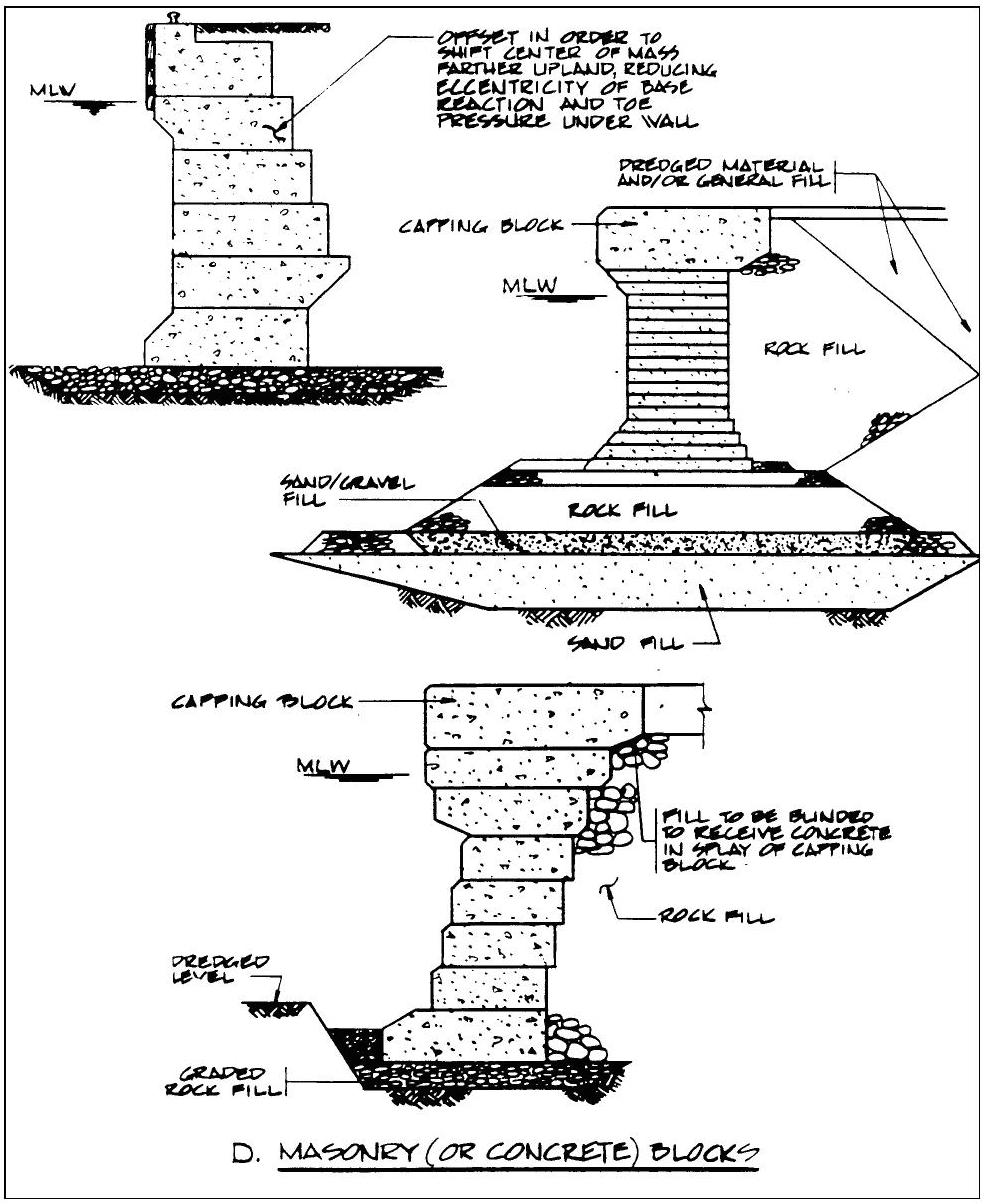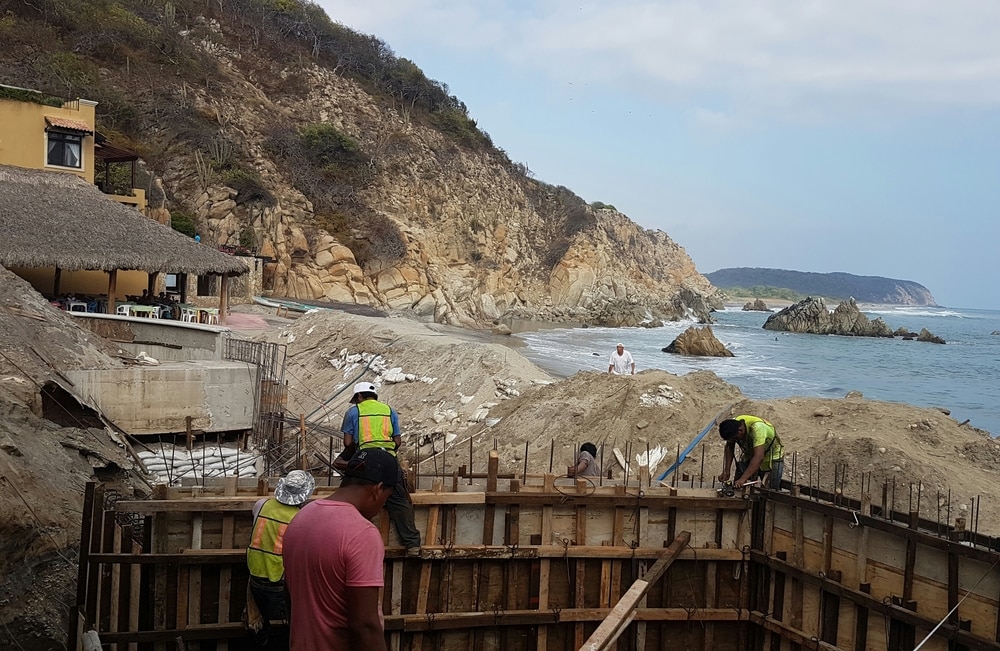Chapter 5 – Quaywalls
For a complete version of this document click here.
5.1 Types of Construction
General types of construction are shown schematically in Figures 35, 36, 37, and 38. Examples of actual construction are shown in Figures 39, 40, 41, 42, 43, 44, 45, 46, and 47.
5.2 Selection Factors
5.2.1 Water Depth. Theoretically, there is no upper limit to the depth of water in which a gravity structure can be constructed except that the height of a sheet pile cellular structure is limited by the tensile strength of the sheets and of the interlocks (bursting strength). However, with modern high strength materials, high capacity interlocks, and using a clover leaf form, depths greater than 50 ft (15.2 m) can be accommodated.
5.2.2 Maintenance. Steel sheet piling is subject to corrosion. Reinforced concrete may develop corrosion of the reinforcement. Timber is subject to attack by borers. Concrete is subject to sulphate and other forms of chemical attack. Masonry structures require repointing of joints. In general, however, concrete and masonry require the least maintenance.
5.2.3 General. Assuming adequate protection of timber (cribs) against borer attack, the factors cited above (water depth and maintenance) are minor. Selection is based on minimum first cost, with life-cycle cost an additional consideration when the use of steel sheet piling is contemplated.
5.2.4 Special Considerations Relative to Filled, Cellular Construction
5.2.4.1 Cohesive Soils. Generally a filled, cellular structure is a poor selection if the fill in cells must consist of soft, cohesive soil. The reason is that high bursting pressures are developed. A second case is where the sheets are driven through soft, cohesive soils. If such soils are not removed from inside the cell, again a high bursting pressure is developed, but if said soil is removed from inside the cells, an inward pressure is developed which is likely to require a heavy internal bracing system.
5.2.4.2 Hard or Boundary Soils. Generally a filled, cellular structure is a poor selection if sheets must penetrate hard or bouldery soils in order to reach required tip elevations, resulting in a tendency for sheets to drive out of interlock or to tear.
5.3 Detailed Design Considerations
5.3.1 General Requirements. (Refer to MIL-HDBK-1025/6.)
5.3.2 Structural Design Criteria. Deck framing, track beams, or other members which function as direct supports for crane, railway, or truck loading shall be designed for Service Classification A. Other elements of support wherein the impact effect is dissipated into a mass of soil (buried portions of piling, for example), shall be designed for Service Classification B criteria.

Types of Quaywalls (Examples A thru C)

Types of Quaywalls (Example D)

Types of Quaywalls (Examples E and F)
5.3.3 Filled, Cellular Construction
a) Stiffen cells by capping sheet pile walls with concrete (see Figure 48).
b) Do not rely on fill in cells to support slab. Fill in cells will settle and will settle differentially.
c) Be cautious about driving displacement-type piles inside cells for support of trackage, utilities, or other purpose. Use non-displacement types.
d) Be cautious about densifying soil in cells by use of compaction piles or vibrators.
5.4 Appurtenances. Fender systems, fittings, and other appurtenances are to be provided as described for piers and wharves in MIL-HDBK-1025/1, Piers and Wharves. Utility services are to be provided as described for dockside utilities in MIL-HDBK-1025/2, Dockside Utilities for Ship Service. Aids to navigation are to be provided as described for harbors in DM-26.1, Harbors.
-
 SPW911 Sheet Pile Design Software
Rated 5.00 out of 5$150.00 – $599.99Price range: $150.00 through $599.99
SPW911 Sheet Pile Design Software
Rated 5.00 out of 5$150.00 – $599.99Price range: $150.00 through $599.99 -
 Sheet Pile Design (PDF Download)
Rated 5.00 out of 5$89.00
Sheet Pile Design (PDF Download)
Rated 5.00 out of 5$89.00 -
 Pile Driving (PDF Download)
$89.00
Pile Driving (PDF Download)
$89.00
-
 Marine Construction Volumes 1 & 2 (PDF Download)
$157.00
Marine Construction Volumes 1 & 2 (PDF Download)
$157.00
-
 Pile Driving (Book)
$89.00
Pile Driving (Book)
$89.00










